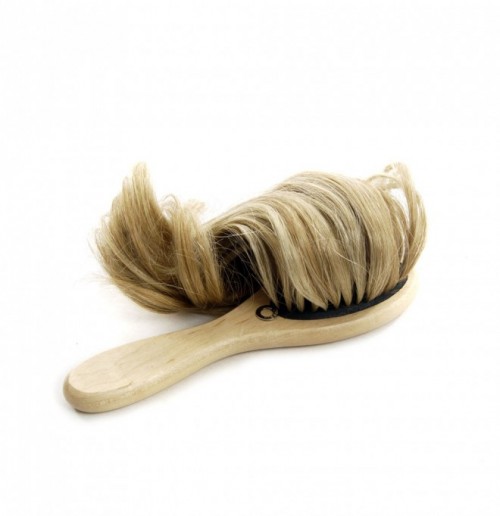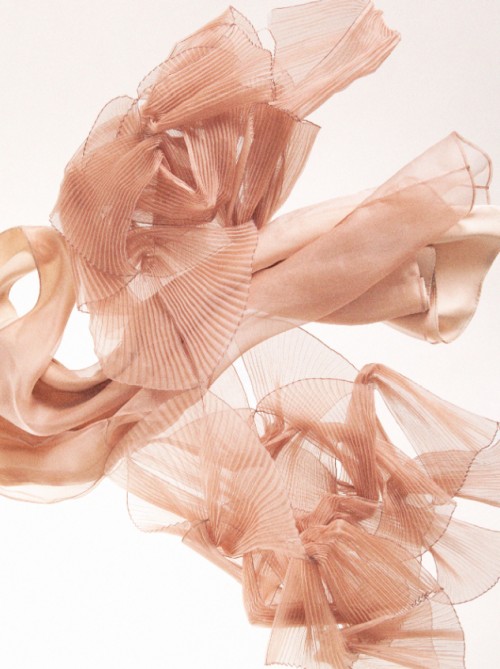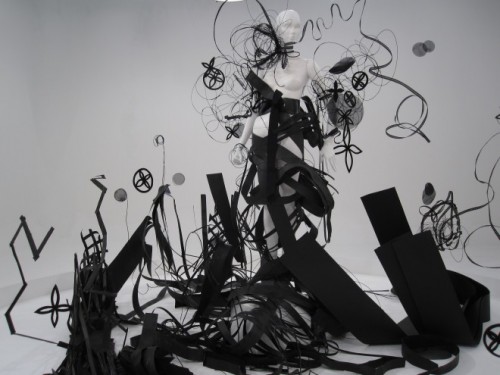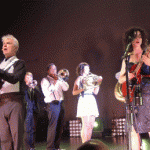“We do not want to hold fast to any one thing, and we do not want to claim that we are at home in any particular field because the day after tomorrow, something completely different may inspire us.”
— Bless, in Metropolis: January, 2002.
The global fashion industry generates well over one trillion dollars per year. Though the purely market-driven abyss of “fast fashion” contributes significantly to this number, the possibility for Avant-gardist fashion studios to thrive on creative, intellectual, and emotionally responsive practices should not be underestimated.
The Art Institute of Chicago’s exhibition “Fashioning the Object: Bless, Boudicca, Sandra Backlund” — open through September 16 — proves that fashion can function as an engaging critical medium, through which to potentially understand and respond to human behavior. Employing cross-disciplinary methods and ideas, the designers featured in this show have gained prominence within the industry by staunchly challenging conventional approaches to presentation, materials, and concepts.
Organized by Zoë Ryan — who was tasked with expanding the depth and scope of the museum’s contemporary design department in 2005 when she was appointed Curator of Architecture and Design — the current exhibition was conceptualized to highlight an area of design that Ryan saw as influential yet largely underrepresented.
“We have organized exhibitions on graphic design, furniture and product design, and multi-media design, but one area we had not covered was fashion design,” she told F Newsmagazine. “Fine art’s ability to grapple with philosophical ideas has long been acknowledged, and architecture and design’s potential to do so is increasingly accepted,” Ryan explains in her essay written in conjunction with the show. “Fashion’s ability to engage in similar investigations has, for the most part, only recently been recognized.”
Interested in the idea of fashion as a lens through which to explore issues concerning individual identity, society, and “our place in the world,” Ryan shaped the exhibition to highlight fashion’s potential to communicate a range of insightful ideas and encourage lively dialogue about the role of art and design within our everyday lives.
Included in the exhibition are three fashion labels whose designers consistently reach beyond the straightforward presentation of single garments, or collections of clothing. Though each practice is incredibly different from the other, Bless, Boudicca, and Sandra Backlund stress innovation rather than focusing only on practicality or market value. The exhibition suggests that these design studios have situated themselves within the fashion industry, as well as within numerous broader contexts.
“I wanted to organize an exhibition that explored the relationship between fashion and the larger field of design, and focus specifically on the presentation methods that these designers use to explore their work and illustrate their concepts,” explained Ryan. To fit the demands of each studio’s distinctive process, the exhibition is divided into three separate “experiences.” Collectively, they enforce the notion that fashion can play a valuable part in the critical exchange that encourages us to question and possibly alter our expectations. “Given the conceptual nature of the work on display, we tried to create environments that would make people feel comfortable about forming their own ideas and interpretations about the work,” she said.
German designer Ines Kaag and Austrian designer Desirée Heiss work collaboratively as Bless, officially founded in 1997. Maintaining separate studios in different cities, the designers collaborate from a distance, Kaag from Berlin and Heiss from Paris. Together they produce clothing, accessories, products and events that explore alternative, often humorous uses for existing objects or concepts found within everyday life.
Bless’ output reflects an attempt to re-imagine clothing and objects that we rely on daily yet seldom think about in terms of the impact they have on our lives. In providing alternative designs for common items, Bless attempt to open our eyes to the fact that numerous practices, such as hiding from view many of the objects we use the most, do not always make the most sense. Instead of stringing electrical chords under rugs and storing clothing and accessories behind closed doors, they create design solutions that encourage an awareness of the everyday world.
One of the many novel items included in the installation is “Servering,” a 2010 design for a ring with several small food bowls attached on top, which perform as both decorative and functional elements. Possibly to be worn to a lively social gathering, the accessory serves as a stylish solution to the physical limitations imposed by traditional formal tableware.
As Bless is interested in alternative forms for presenting their designs, they worked with Ryan to imagine an interactive space wherein visitors could touch and investigate individual objects. Their objects hang from a tailor-made chain mail curtain that leads the visitor around the show — the environment is antithetical to the traditional art museum space or fashion runway show where the spectator must keep a safe distance from the work on display. “Bless’ installation is an immersive environment,” explained Ryan. “It serves as an informal way to show their work, and hopefully encourages a deep level of engagement in their conceptual output.”
The two designers who comprise the London-based design label Boudicca take an approach to fashion that draws on complex intellectual ideas and pushes toward an exploration of human emotions. British designers and partners Zowie Broach and Brian Kirkby established Boudicca in 1997, and have since been producing award winning clothing and films that reference and incorporate ideas from history, art, philosophy, and popular culture.
In their 1999 Spring/Summer collection called “System Error,” Boudicca wanted to investigate the impact of technology on human interaction. In one design from the collection, “Solitary Dress,” the garment is slashed at the waist so that the wearer can hug herself through her clothes.
Like Bless, designers Broach and Kirkby investigate nontraditional methods of presenting their work and disseminating ideas. As runway shows and fashion magazines can obscure the creative process behind designed objects, Boudicca use the medium of short film and video to contextualize their ideas and open them up to interpretations beyond the surface of their garments. “Boudicca’s exhibition space is more moody and atmospheric with banks of monitors illustrating the multiplicity of ideas that drive their work, dotted with examples of their clothing and accessories as points of reference,” said Ryan.
The Swedish designer Sandra Backlund established her own fashion label in Stockholm in 2004, and she has since become internationally known for her intricate knitwear. Through her complex construction processes, Backlund’s three-dimensional sculptural pieces acknowledge the connection between design and the intricacies of the human body. Her work also builds on the rich history of knitting as a craft in Sweden, resituating it within the context of the contemporary fashion industry.
The designer has, over the course of her career, mainly worked alone and by hand to produce her made-to-measure garments, which can require hundreds of hours of work for a single piece. As Ryan notes, Backlund does not work from drawings, but instead creates her pieces from scratch, building her fabric as she goes. Her process works against the fashion industry’s push for quickly passing trends and techniques for rapid mass production.
Given the detailed nature of her pieces, Backlund had to find a way to represent the elaborate texture and masterful construction of her pieces, which did not fully translate in fashion photography. She collaborated with still-life photographer Ola Bergengren, who was able to capture the sculptural quality in Backlund’s work. “Large-scale photographs of details of her works focus the viewers’ gaze onto the craftsmanship of the work, whereas the mannequins make clear that these are garments meant to be worn and illustrate how they fit the body,” explained Ryan.
“Fashioning the Object” brings together three very different studios whose designers, through their critical approaches and experimental practices, elucidate the ways that fashion can enable us to examine societal norms and transform our environment in creative and diverse ways. While fashion can embody freedom of expression on the individual level, it can also question limitations and social restrictions. For Bless, Boudicca, and Sandra Backlund, the drive to blur these boundaries defines their practices.
























